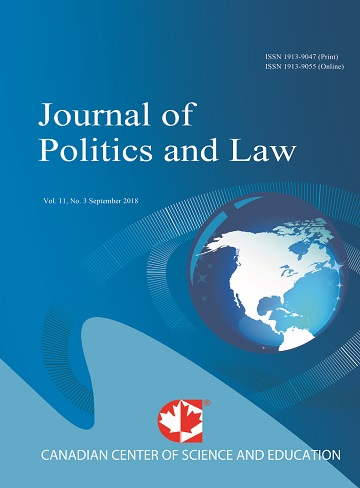Australasian Reflections on Modern Slavery
- Barbara Hocking
- Yega Muthu
Abstract
In early February 2012, a federal judge threw out a law suit brought by PETA claiming that whales were ‘enslaved’ by SeaWorld (Note 1). While it met a swift and sorry end, the law suit provides an opportunity for reflection upon what constitutes slavery in the modern context. We are familiar with the Roman “Spartacus” slave scenario and the classic American Civil War “Gone with the Wind” slavery scenario – but how comfortably do we connote modern exploitative labour situations, where individuals (human not animal), find themselves with no avenue of escape. The most commonly challenged modern slavery situations are those in brothels: to what extent do modern brothels in Australia cohere with our understandings of slavery? In a recent High Court decision, Justice Michael Kirby took a strongly different view from his fellow judges in that regard. And what are we to make of the PETA lawsuit claiming (unsuccessfully) that orcas in SeaWorld are enslaved to humans to do their unwilling bidding as entertainers? As a logical extension of that claim, ought we not view the doomed horses in the English Grand National as slaves? They also do their unwilling bidding as cash cows, many of them dying in agony as part of the very spectacle. Very many situations that potentially cohere with slavery today will not cohere with our traditional understandings and stereotypes let alone our modern and as yet not fully articulated understandings. This is a debate more familiar in the USA – yet while Australia has not had an entrenched system of human slavery, an emerging jurisprudence points to modern incarnations while also reinforcing arguments about the effective enslavement of many Aboriginal people during the period of assimilation: a period that gave rise to the ‘Stolen Generation’. The purpose of this article is to reflect upon this emerging jurisprudence and to suggest that while we are continuing to unlock new ideas about slavery in the modern context – both human and animal – but we are far from developing, historically, strategies for their abolition. The way forward, it is suggested, is to recognize as a first step in the human context, that exploitative modern labour situations may appear akin to slavery but need perhaps more appropriately to be dealt with as modern servitude; and as a second step that jurisprudential understandings of animal enslavement: exemplified by the orcas but also personified in events like the Grand National; may appear on the comparative legal agenda in future decades.
- Full Text:
 PDF
PDF
- DOI:10.5539/jpl.v5n4p69
Journal Metrics
h-index (2017): 14
i10-index (2017): 39
h5-index (2017): 9
h5-median (2017): 11
Index
- Academic Journals Database
- ACNP
- ANVUR (Italian National Agency for the Evaluation of Universities and Research Institutes)
- Berkeley Library
- CNKI Scholar
- COPAC
- CrossRef
- DTU Library
- EBSCOhost
- Elektronische Zeitschriftenbibliothek (EZB)
- EuroPub Database
- Excellence in Research for Australia (ERA)
- Genamics JournalSeek
- GETIT@YALE (Yale University Library)
- Ghent University Library
- Google Scholar
- Harvard Library
- HeinOnline
- INDEX ISLAMICUS
- Infotrieve
- Jisc Library Hub Discover
- JournalGuide
- JournalTOCs
- LOCKSS
- MIAR
- Mir@bel
- NewJour
- Norwegian Centre for Research Data (NSD)
- Open J-Gate
- PKP Open Archives Harvester
- Publons
- Pubmed journal list
- RePEc
- ROAD
- Scilit
- SHERPA/RoMEO
- Standard Periodical Directory
- Stanford Libraries
- UCR Library
- Ulrich's
- UniCat
- Universe Digital Library
- UoS Library
- WorldCat
- Zeitschriften Daten Bank (ZDB)
Contact
- William TaiEditorial Assistant
- jpl@ccsenet.org
